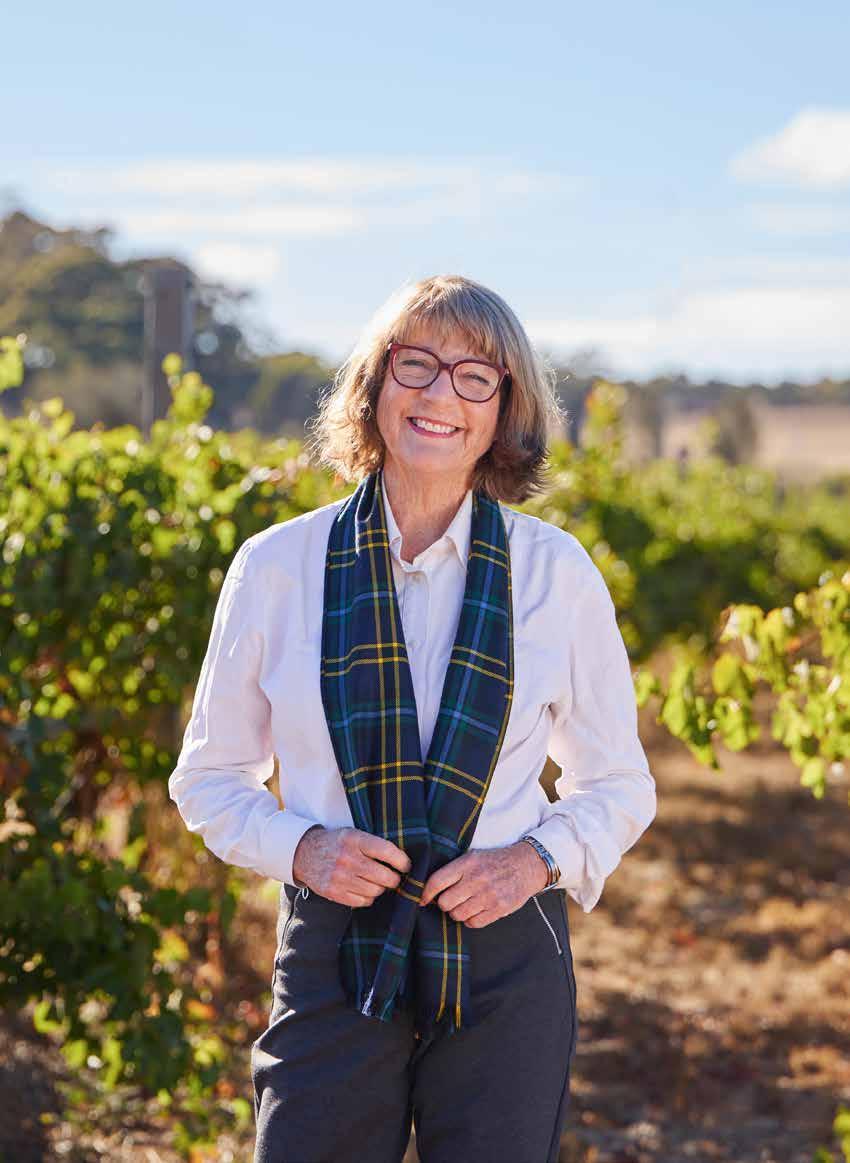
ADJUSTING TANK SIZES
2024 ANNUAL THEME: STRATEGIC PLANNING | ISSUE THEME: SPOTLIGHT ON BAROSSA
NURTURER SOIL FIRST FOR SUCCESS Speaking volumes
NATURE’S
BETTER BUDGETS PERSPECTIVES FOR SMALL BUSINESSES JUNE 2024
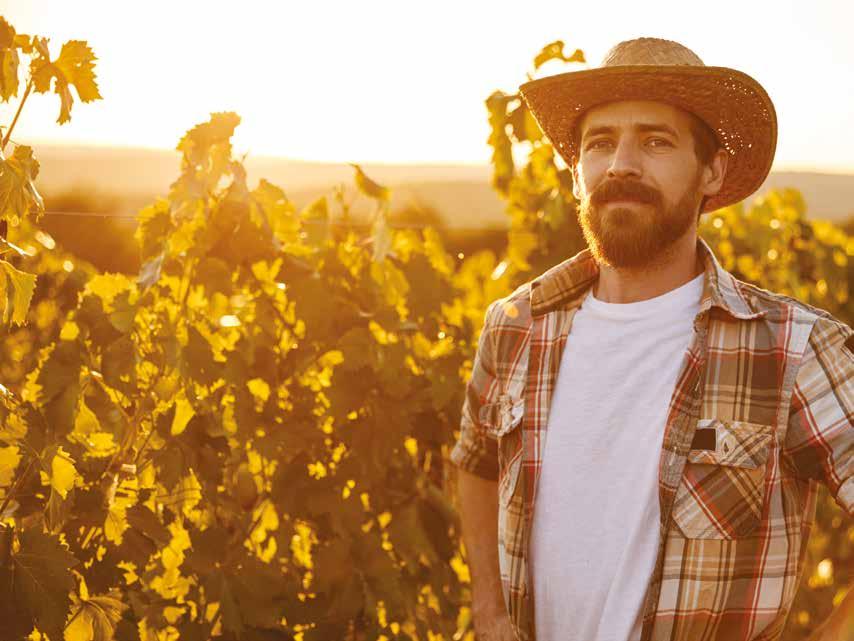

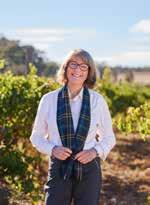
Cover: This month, we are shining a Spotlight on the Barossa, where we talk to viticulturist Prue Henschke about the secret to healthy soil, and visit the peak of High Eden to hear how Young Gun Caitlin Brown is taking Chardonnay to new heights. We also introduce a new yield estimation tool using real-time data. Cover photo of Prue Henschke by Duy Dash. REGULARS
6


7 Australian Vintage sacks CEO 8 Australia’s First Families of Wine call to save a wine industry in crisis 10 Hawke’s Bay recipients named in first Great Wine Capitals knowledge exchange
12 New chief executive appointments underscore wine industry commitment for NZ research centres
13 Bleasdale’s senior winemaker hands over the reins after 17 years
GRAPEGROWING
20 Sheep in vineyards: know the risks 24 FEATURE Fertiliser marker: the quest for recovering lost demand
28 FEATURE Spotlight on the Barossa
FEATURE Prue Henschke: nature’s nurturer
42 Transforming yield estimations using real-time bunch weight tool
WINEMAKING
48 Young Gun: Caitlin Brown
54 FEATURE Changing capacities: selecting your tank size
59 FEATURE Wine storage options: Amphorae
66 Behind the Top Drops: Hoosegg Seven Heaven Chardonnay
BUSINESS & TECHNOLOGY
72 FEATURE The benefit of an outside perspective for financial success
76 New report shows a decade of progress for women in the Australian grape and wine sector
78 Alumni winemakers showcase connection to place, industry and education
80 How to manage workplace injuries
SALES & MARKETING
84 Strategies for success in online sales
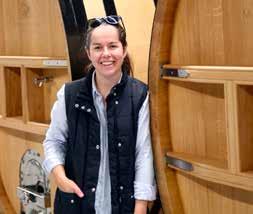
June 2024 – Issue 275 www.winetitles.com.au Grapegrower & Winemaker 3 contents June 2024 ISSUE 275 20 42 48 2024 ANNUAL THEME: STRATEGIC PLANNING | ISSUE THEME: SPOTLIGHT ON BAROSSA NATURE’S NURTURER SOIL FIRST FOR SUCCESS Speaking volumes ADJUSTING TANK SIZES BETTER BUDGETS PERSPECTIVES FOR SMALL BUSINESSES JUNE 2024 THE AUSTRALIAN NEW ZEALAND GRAPEGROWER WINEMAKER JUNE 2024
issue 15 International briefs 16
Work 70 Ask the AWRI 88 Producer
Jeremy Ottawa 91 Looking Back 91 Calendar 92 Marketplace classifieds NEWS
What’s online 6 In this
R&D at
Profile:
34
Sheep in vineyards: know the risks

Sheep are frequently agisted in vineyards to help maintain the vineyard floor, reducing vehicle movements on wet soils that can add to soil compaction. Vinehealth Australia’s new ‘Sheep and Vineyard Biosecurity Risk’ Fact Sheet outlines essential steps to prevent the introduction of pests, diseases and weeds, enhancing both vineyard productivity and animal welfare, as Suzanne McLoughlin writes.
Using sheep to control midrow and undervine growth in Australian viticulture is an increasingly popular alternative to slashing and spraying and has the potential to reduce vineyard management costs.
Before welcoming sheep onto your vineyard, Vinehealth Australia recommends considering the biosecurity risks and covering these in a written agistment agreement with the sheep owner.
“Including biosecurity risks in the agreement can help prevent a plant pest, disease or weed being moved onto your vineyard,” said Warren Birchmore, Vinehealth Australia Technical Assistant.
To protect both yourself as the vineyard owner (agistor), and the potential agistee, the agistment agreement should outline expectations and responsibilities, including:
• Number of sheep and pregnancy status.
• Duration of the agreement.
• Agistment fees and ability to renegotiate.
• Person responsible for caring for livestock and animal welfare.
• Type, quantity and quality of feed.
“You also become part of the chain of responsibility for animal welfare when you have the sheep on your vineyard and when you are consigning them for transport off your vineyard, so it’s important to ensure you’re up to speed with the rules.”
• Requirements for water sources.
• Containment (fencing).
• Animal identification (to aid in the case of escapees and/or theft).
• Access to the property by the livestock owner or person responsible for livestock welfare.
• In the unlikely event of livestock death, the responsibilities of both parties.
Other important considerations
The agistment history of the sheep: if the sheep have previously been agisted in vineyards in a Phylloxera Infested Zone (PIZ) or Phylloxera Risk Zone (PRZ), do not accept them for agistment in a vineyard in a Phylloxera Exclusion Zone (PEZ). It is also recommended that sheep are not moved for agistment either between vineyards located within a PIZ
20 Grapegrower & Winemaker www.winetitles.com.au June 2024 – Issue 275
grapegrowing
Photo: Voyager Estate
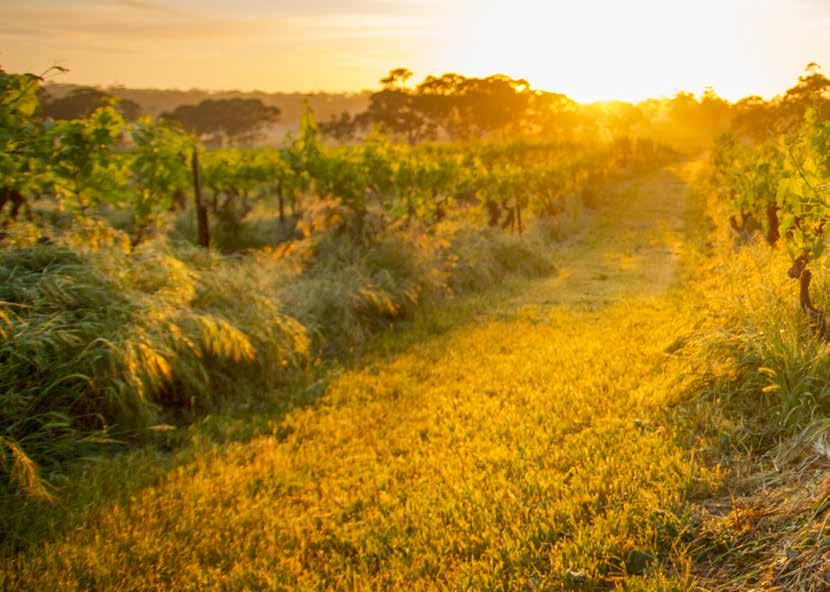
REGIONAL SPOTLIGHT
Barossa
State of the Region
Barossa
BHome to some of the world’s oldest vines, and to many of Australia’s most iconic and celebrated wines, the Barossa continues to shine as the home to high quality fruit production and winemaking. Barossa Australia Viticultural Development Manager Nicki Robins provides this update on the challenges, opportunities and achievements in this always-dynamic SA region.
arossa’s total planted area is 14,212 hectares, with its “hero” variety Shiraz comprising around 45,000 tonnes of an average 65,000t crush. In an average year, Barossa winegrapes total around four percent of the national crush volume, and 11.5% of the national crush value.
The Barossa zone is made up of two wine regions. Barossa Valley, the majority at 120-360m above sea level specialises in varying wine styles of largely Shiraz, Cabernet Sauvignon and Grenache. Neighbouring Eden Valley, renowned for its Riesling, is cooler and higher with vineyards up to 630m.
Barossa Australia, the peak body originally representing 500+ growers and
*Source:
170 wineries, recently amalgamated to include 180 tourism businesses, bringing scale, reach and synergy to its strategies and activities.
Yields low, quality and costs high
Barossa’s yields are very low, and quality high – with the majority of reds producing only 3-7t/ha, and whites slightly higher. As equally as the fruit quality is high, so is the cost of operating a Barossa vineyard at between $12,000 and $16,000 per/ha (including depreciation and financing costs at $3500/ha).
This is due to factors such as the significant cost of water for most growers, meticulous hand pruning, and canopy
management during the season which can involve shoot and bunch thinning to achieve optimum yields. Harvesting is also a significant cost, particularly with old bush-vine Grenache which has to be picked by hand,
In 2023 the average price for Barossa Shiraz was around $1989/t*. This is compared with $2612/t in 2020. It doesn’t take much working out to conclude that at 3-7t/ha many Barossa growers’ income is now well below the cost of production, let alone profitable.
Focus on our own backyard
In these extremely challenging times (and Barossa is painfully aware the current “wine industry crisis” is felt
28 Grapegrower & Winemaker www.winetitles.com.au June 2024 – Issue 275
Wine Australia National Crush Survey (does not account for fixed price in long-term contracts, which elevates the average price).
grapegrowing
Prue Henschke: Nature’s nurturer
By Meg Riley
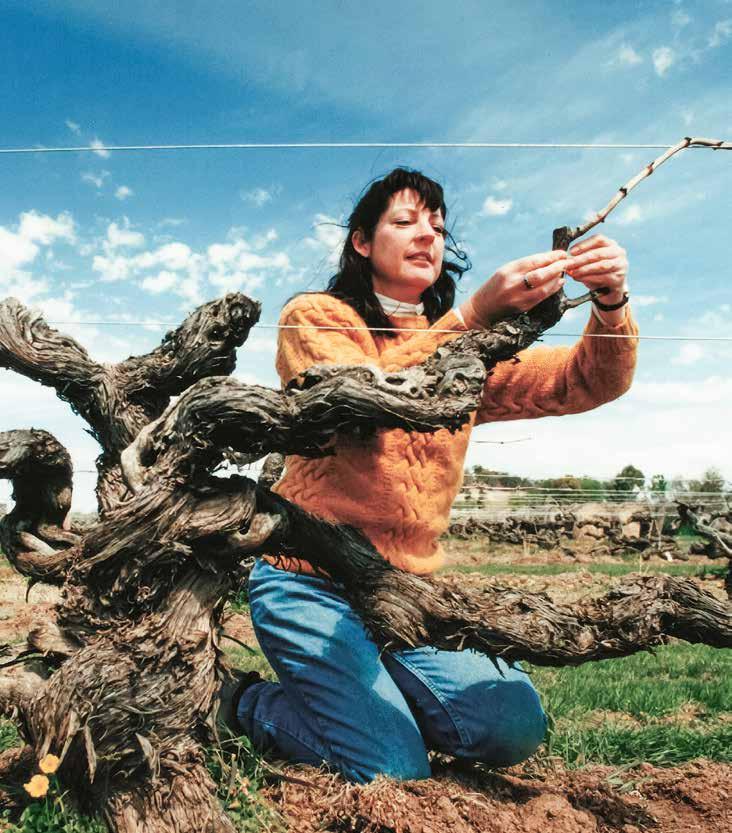
Prue Henschke is a viticulturist, environmentalist and botanist at Henschke in South Australia, caring for the family’s vineyards across the Barossa and Adelaide Hills. Her ongoing commitment to working with the natural environment, rather than against it, has set her apart as a pioneer in the industry. She has been practicing regenerative agriculture since before anyone had a term for it. Using her
botanical knowledge, Prue’s extensive work incorporating native plants into the vineyards to benefit insect life, as well as her attention to soil health, regenerative practices and trellising has been widely acknowledged within the industry, with Henschke titling its 2019 vintage from its oldest vineyard, the Hill of Grace, as “A Vintage Graced by The Nurturer” in her honour. Just last year, Prue was named as an inaugural inductee into
James Halliday’s Hall of Fame for her contribution to the wine industry.
Starting out
Back when she and her then-boyfriend Stephen were students, and Stephen suggested that she join him to study viticulture at Geisenheim University in Germany, Prue saw it as an “excellent opportunity” to put her botanical background to work.
34 Grapegrower & Winemaker www.winetitles.com.au June 2024 – Issue 275
Barossa
Prue Henschke in the vineyard c. mid-1980s
grapegrowing
Soil Management
YOUNG GUN
High Eden winemaker
Caitlin Brown

I always wanted to work for a bigger company and see how they did it... see what other family businesses do, and other regions. I think you get a bit of tunnel vision if you’re in the same spot
Caitlin Brown
cheers to that!
Caitlin Brown was determined to experience the wine industry outside the confines of her family’s winery in High Eden. Now, having made wines in Germany and France, and following her passion for Chardonnay to various cool-climate regions in Australia, Caitlin has finally returned home to Mountadam, where she is exploring the unique site at the peak of the Barossa and making it her own.
Caitlin Brown grew up getting her hands dirty in the vineyard, and has never been shy of the “boring” jobs. When Caitlin was 10, her parents purchased land in Lucindale, South Australia, and she and her siblings were (unofficially) employed to help with planting it into a vineyard.
A few years later, the family purchased Mountadam Vineyards from LVMH,
a small vineyard and winery in High Eden, Barossa, established in 1972 by David Wynn. When Wynn sought out the highest point in the Barossa to plant his Pinot, he settled on the area which is now Mountadam, a winery he named after his son Adam.
More than 50 years later, Caitlin, who has spent much of her winemaking career outside of the family business, is now at
the helm of Mountadam, and she hopes to change things up in how the winery is passed down.
Work/life balance
Caitlin’s daughter was five-monthsold when Mountadam started the 2024 vintage. Balancing work in the wine industry whilst having a young family is a challenge that appears to
48 Grapegrower & Winemaker www.winetitles.com.au June 2024 – Issue 275
Caitlin in the Chardonnay bunker
winemaking
Barossa
Winery Tanks & Storage
Wine storage options: Amphorae
An alternative to oak or stainless-steel tanks
Paul Le Lacheur unearths details about amphorae and the benefits these clay vessels could potentially provide to the winemaking process.
Recent advances in skin contact technology, particularly fermentation, ageing and relatively long storage of wine in amphorae, have yielded impressive results. Interestingly, these changes have been adopted in the Old World and are now also being embraced in the New World. These practices originated in Georgia 6,000-8,000 years ago but are experiencing a renaissance around the globe as winemakers realise that this ancient technique brings new opportunities to viniculture.
Clay is an excellent thermal conductor, which releases heat from fermentation, obviating the need for temperature control.
An amphora is “an ancient Greek or Roman jar or vase with a large oval bowl, narrow cylindrical neck and two handles that rise almost to the level of the mouth”. Georgia was central to their usage, where they were known as “Qvevris”. This ancient winemaking technique is so central to winemaking culture that it has been added to the UNESCO World Heritage list. New World winemakers, who have no such history, are now making wines using the amphora method to make new and original wines.

Sensory attributes
According to its proponents, modern use of this technique allows for slow micro-oxygenation, naturally controlled
temperatures, pure expression of the fruit and softening of the acidity. Alternatively (especially when fired at very high temperature) it leads to the preservation of acidity.
June 2024 – Issue 275 www.winetitles.com.au Grapegrower & Winemaker 59












